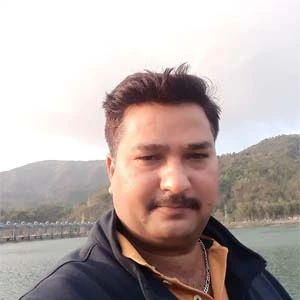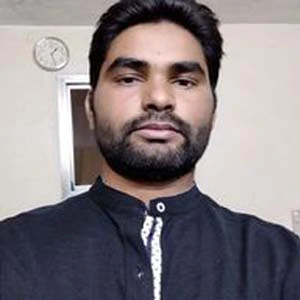What is Patent Registration?
The patent is a limited-time exclusive right granted to the Patentee to protect ideas and inventions. Patents in India are governed by the 1970 Patent Act and the 1972 Patent Rules. Through Patent Registration, the patentee acquires all rights to control, manufacture, use, sell, or import the patented product or process for manufacturing that product. An individual or a company obtains intellectual property rights to an invention through the patent registration process. It gives you the exclusive right to create, use, sell, or import the product or services and prevents others from doing the same. It also ensures that the owner receives priority over others for your specific invention. A patent is valid for 20 years, and not all ideas are patentable. If the idea has the potential to become an invention, a provisional patent application may be filed. Now, if you want to apply for Patent Registration in India, apply trademark can file an application on your behalf because apply trademark acts as a Patent Agent throughout India.
What can be patented in India?
Patentable inventions in India can be related to work, process, manufacturing, machine related, computer software, or any other type of invention that has never been invented to the general public.
What Inventions Are Not Patentable?
According to the Patent Act of 1970, the following are not inventions:
-
Prejudice to a human, animal, or plant's life, health, or the environment. The discovery of a scientific principle, the formulation of an abstract theory, or the occurrence of any living or non-living substance in nature.
-
Simple admixture results in the collection of the components' properties.
-
Simple arrangement or re-arrangement of devices found in nature.
-
Any agricultural or horticultural method, whether medicinal, surgical, curative, or prophylactic diagnostic.
-
Playing the game with a computer programme or any mathematical methods.
-
Atomic energy cannot be patented.
What is the Importance of Patent Registration in India?
-
Protects your invention
A patent is a type of intellectual property that safeguards your invention by preventing others from using it without your permission. Because you own all of the rights, it deters competitors.
-
20-year patent protection
Your invention is protected for a set period of time, which is 20 years.
-
Rights Reserved
It also boosts your company's revenue by allowing the patent holder to charge a premium for the invention.
-
Reputation of the inventor
The inventor's credibility will increase once the patent is registered.
-
Enough funds
Although it only pays a lower royalty, it is extremely beneficial to people who have an idea but lack the funds to bring it to market by selling the idea outright.
-
Sell or transfer patent rights
You can sell, transfer, or franchise your patent after it has been registered.
Filing Criteria for a Patent Registration Application
-
Patentable subject matter
Sections 3 and 4 of the Patents Act list non-patentable subject matter. This list should not include your invention.
-
Originality or non-obviousness
The concept should stand out from the crowd and be difficult to predict. To be patented, something must be technologically advanced or economically profitable.
-
Novelty
In order to obtain patent rights and complete the patent registration process smoothly, the invention must be unique. As a result, it should not be used anywhere, including the public domain.
-
Industrial applicability
The idea or invention must be useful in some way and not ambiguous. Furthermore, it must have industrial applications and be applicable to a specific industry.
Documents Required for Patent Registration in India
-
Inventor Provide detailed specifications in English as well as a diagrammatic representation of your inventions, as well as the names, addresses, and nationality of the inventors and applicant.
-
All assignment dates and application forms must be signed by the inventor.
-
All information about similar applications filed in other countries must be provided in addition to this data.
-
A verified PCT application in English must also be submitted, or it can be submitted by a trademark patent agent.
-
Upon the controller's request, any type of priority application should be provided.
-
If any of the sequences in the List are in computer-readable text format, they must be submitted as well.
-
If the patent involves the use of biological material, a return permission from the national biodiversity authority must be included.
Patent Registration Process
-
Step 1: Conduct a Patent Search
Before we discuss how to complete the patent registration process, you should know whether or not a patent has already been registered.
-
Step 2: Determine the patent's domicile
It only applies to India and is not applicable in other countries. It is also possible to protect your invention in other countries.
-
Step 3: Drafting Patent Application
A patent application is filed in Form-1 at a patent office along with the prescribed fee listed. Each patent application includes a patent specification i.e. Form 2. You can file a provisional or complete application depending on the state of invention. If it is still in development, then a provisional application should be filed. A complete application must be filed within twelve months of the application's filing date otherwise the application is deemed abandoned.
-
Step 4: Patent application publication
The patent application will be published in the official patent journal after it is filed with the patent office. Patent applications are published in 18 months after they are filed. If the Indian Patent Act restricts the patent's publication, it will not be published in the journal.
-
Step 5: Examination
A patent must be examined before it is granted, and an application for examination must be submitted in Form 18. During the examination process, the examiner will review the application to ensure that it is in accordance with the Patent Act and Rules.
-
Step 6: Examination Report Issuance
The First Examination Report (FER) in this case is filed following an extensive search. The examiner creates the application's first examination report and, if any, grounds for objections.
-
Step 7: Respond to Objections
In order to demonstrate patentability, the applicant must file a written response to the objection raised in the examination report, attempting to negate the objection raised and for this Physical hearings or video conferencing is used.
-
Step 8: Patent Grant
Once the Patent Officer has acknowledged the completion of all objections raised, the patent is granted and the Application status is updated on the site. A patent certificate can be granted in 6 months to 1.5 years.
How does using a trademark help you get a patent registration in India?
In India, Applytrademark offers the best patent attorney and patent search services.
Applying for a trademark can assist you in filing a patent registration application.
You must complete the following steps for Patent Registration in India from Apply trademark:
- Simply go to https://www.applytrademark.co.in/patent-registration/ and fill out your basic information such as name, email address, and mobile number.
- Then we ask that you wait for a call back from a consultant; alternatively, if you are in a hurry, you can make the payment and begin the process right away if you understand the Patent Registration process.
- We will send regular email updates on the status of the project.
- Our team of experts will contact you within one business day, and if you have any further questions, a professional from our senior management will contact you.
- Following an understanding of the structure of your invention, the team of apply trademark will share a detailed checklist of documents that must be provided by you in order for further action to be taken.
- To track the progress of the assignment, we will assign you a unique order number.
- We will assign you a small team of professionals such as CAs, CSs, and lawyers, as well as a personal patent attorney.
- Our experts will take into account all factors, including the invention's potential applications across industries and its advantages over existing items.
- We will send email updates on the status of the work on a regular basis.
- Our team will manage the entire process in collaboration.
- You can track the status of your order by contacting us via email or phone.
Frequently Asked Questions
Indian patent registration grants only territorial rights and is not valid outside of India's borders.
Industrial applicability denotes that the invention is practical. The invention must be of a type that can be used in any industry.
Yes, a patent can be revoked by filing a petition with the High Court by any person and in the case of a counterclaim in a suit for infringement of the patent with the reasonable terms and conditions.A patent may also be revoked in the public interest or when it is no longer functional.
If the requirement is not met within the time frame specified, the application is considered abandoned.


